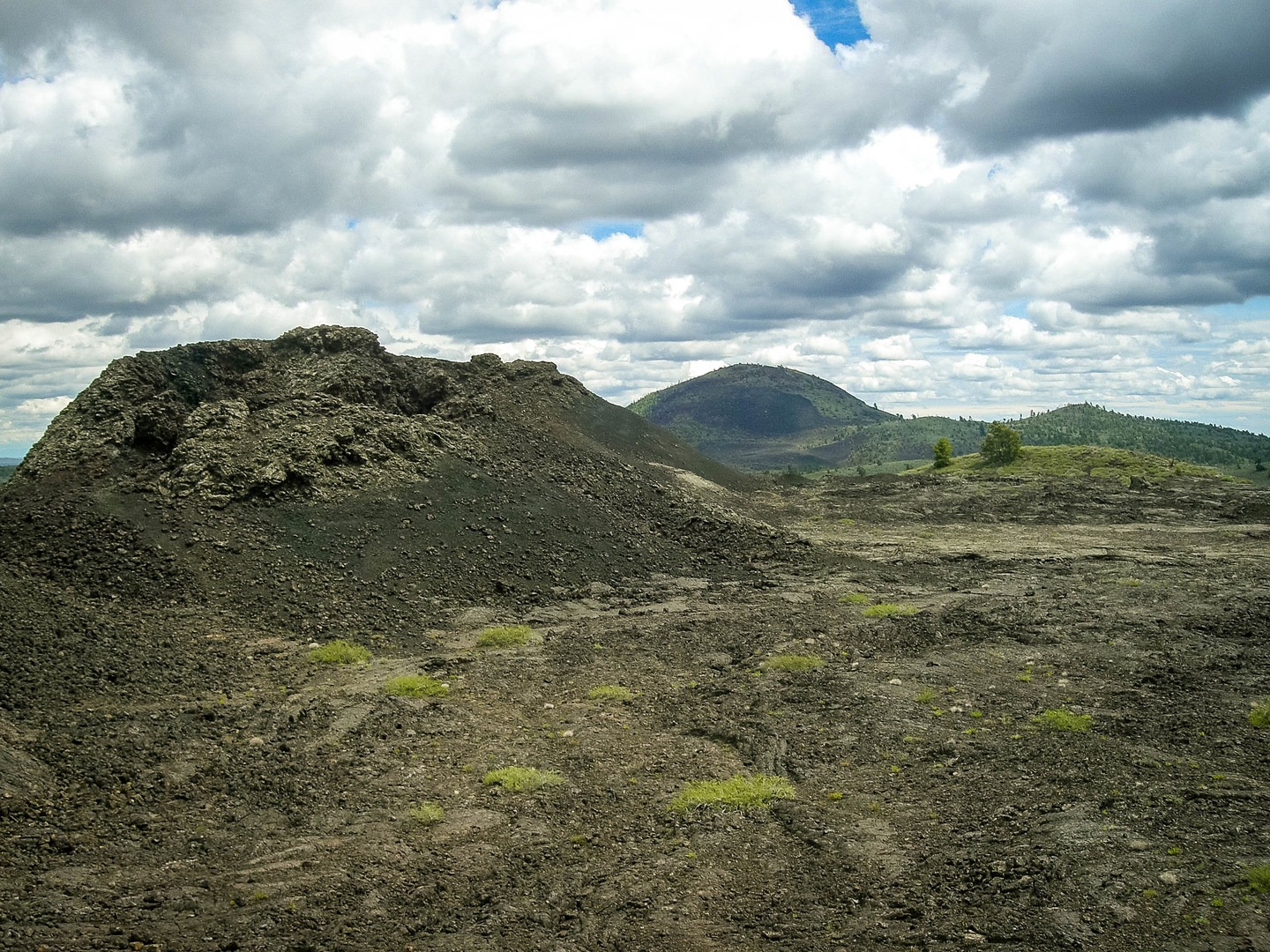Central Idaho's Craters of the Moon National Monument and Preserve was famously called "the strangest 75 square miles on the North American Continent" by an early explorer, and it is indeed a unique and memorable landscape. This monument is named for the seemingly endless craters, lava flows, and piles of loose rock. The area's terrain is so other-worldly that the Apollo astronauts even trained here in preparation for their moon missions. The monument boasts 60 lava flows and 25 cinder cones as well as what is called the Great Rift, a 62-mile-long crack in the earth's surface. The last volcanic activity in the area is said to have occurred nearly 2,000 years ago.
A few years ago the size of the monument was more than doubled, and it now takes in even more features, stretching almost to the Snake River in the south. There are only a few miles of road, and the vast majority of the monument is a roadless, trailess, desert wilderness of sharp black lava rock. It is jointly managed by the National Park Service and the BLM. The National Park Service manages the lava flows while the BLM manages the grass and sagebrush portions.
Craters of the Moon is also known for its extensive system of underground lava tubes and is popular amongst cavers. During the winter, Craters has a good amount of groomed cross-country ski trails and is a destination for many skiers and snowshoers.
Craters of the Moon is situated at the southern tip of the Pioneer range and is quite high in elevation, ranging from 5,000 to over 7,700 feet. Only the northern end of the monument has development of any kind. You'll find a visitor center and museum, a few picnic sites, a developed campground, and many miles of hiking trails. The trails range from short walks to hikes approaching 15 miles, and they take you to many of the most interesting sites in the monument.
Note that weather in this area can be extreme. Summer temperatures frequently approach 100 degrees while winter temperatures can plummet below zero.


























Comments
Sign In and share them.